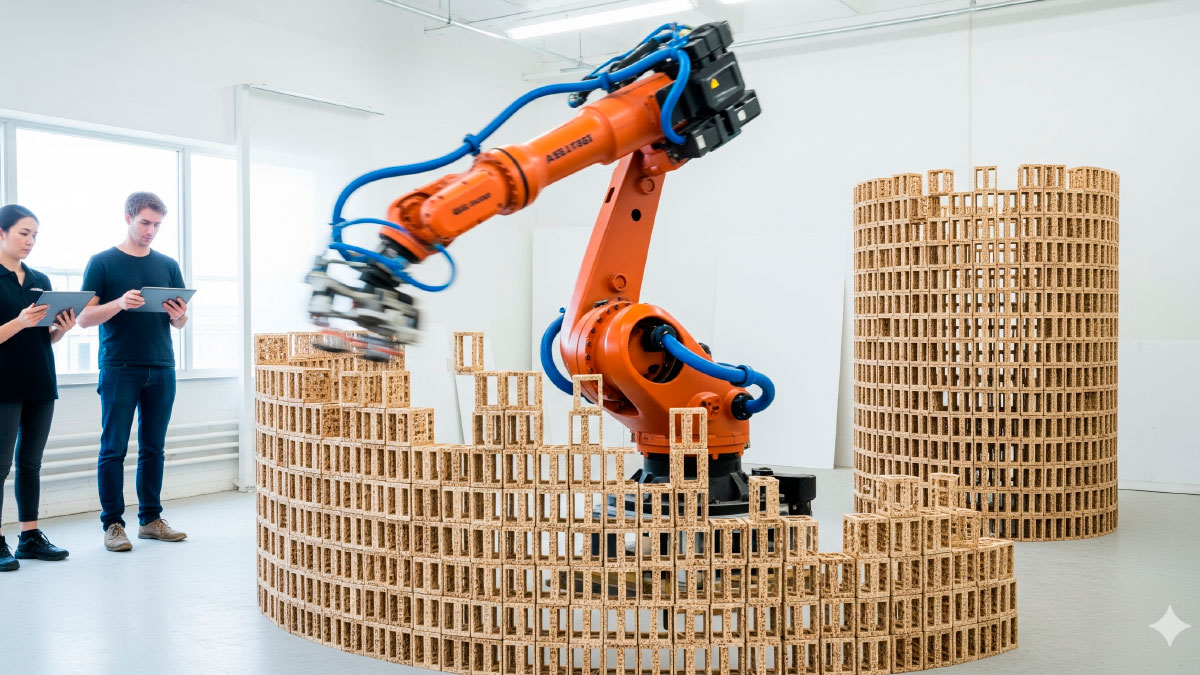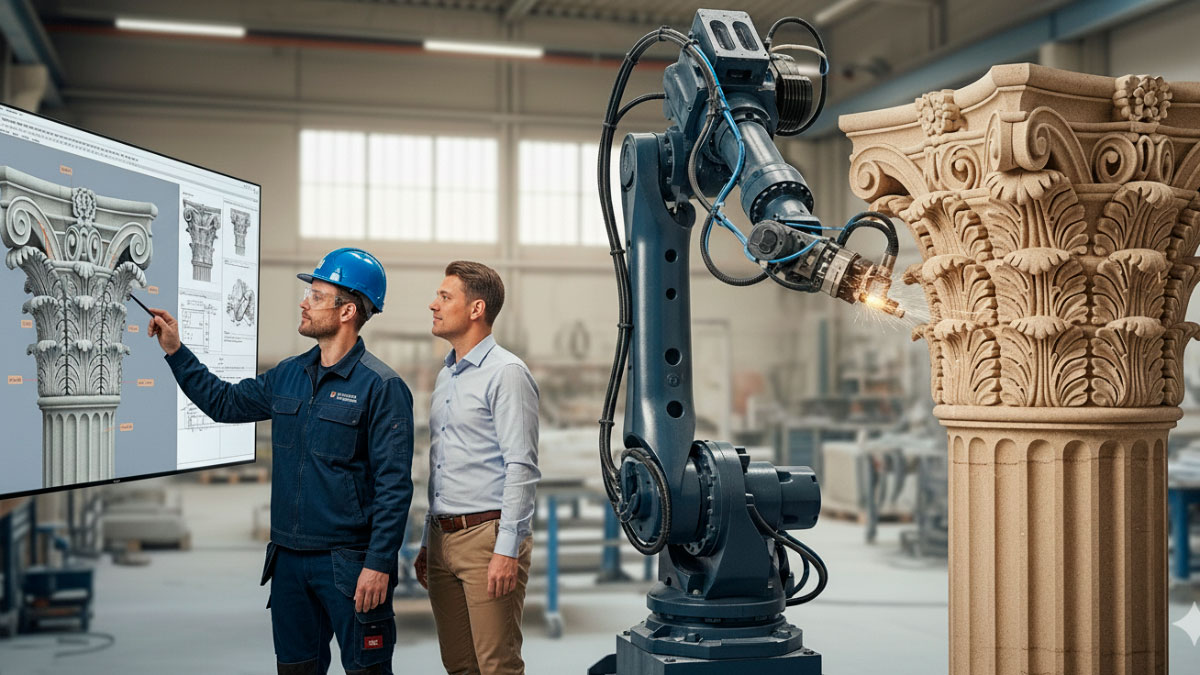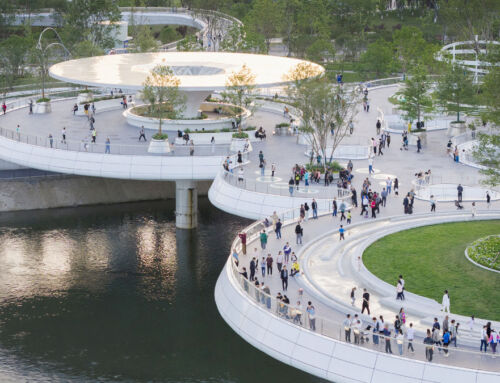Imagine entering the workshop of a Renaissance master sculptor: the rhythmic sound of the mallet against the chisel, chips flying with the dust, and the slow, almost imperceptible emergence of a more or less sublime form from the rough block of marble. Now, let’s transfer that image to a contemporary sculpture studio: a hypnotic robotic arm dances in a programmed choreography while its steel wrist does not strike, but rather mills, sands or extrudes to bring to life a piece of unprecedented complexity.
The latter is not a science fiction scenario, but the reality of digital production: a revolution that uses the robotic arm, a heavy-industry tool, in its work. But the true capability of this robot does not lie in repeating a task millions of times, but in performing millions of different tasks with identical precision.
Now, let’s move on to the field of architecture and theming, which is where we want to go, and we will see that digital production is based on three pillars:
From 3D model to physical reality
The designer—the sculptor, architect, or ‘themer’—uses a computer to create a complex three-dimensional shape. They then use specialised software that translates the geometry of that shape into a code of movements (G-Code) that the robot executes with pinpoint accuracy.

A chisel for every occasion
The robot’s “hands”, or end effectors, are interchangeable. It can hold a milling cutter for carving wood or stone, a head for 3D printing with clay or polymers, a hot wire for cutting foam, or even a pair of tweezers for movement parts with superhuman delicacy.
Tireless Precision
Unlike human artisans, the robot never tires. It works tirelessly on geometries of extreme mathematical complexity, with tolerances below a millimetre, therefore ensuring that the digital vision is realized without compromise.
The designer, then, is no longer limited to drawing plans; he now designs the manufacturing process itself. He becomes a “robot choreographer,” a digital construction maestro. It is a return to the figure of the architect-builder, but armed with the most advanced tools of our time.
And yet, far from generating cold or dehumanized architecture, the robotic arm, used as a precision chisel, allows us to reintroduce ornamentation, texture, and identity into our buildings. In doing so, the most sophisticated technology becomes an ally of the beauty and uniqueness of craftsmanship.
By David González Molina, BIM manager in the Architecture Department of Amusement Logic






